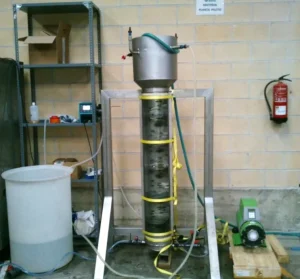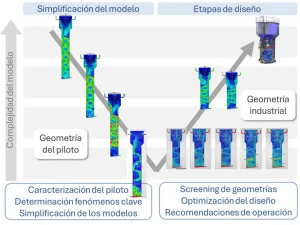Introduce tu búsqueda a continuación y presiona el botón para obtener resultados.
LIFE MULTI-AD has developed and demonstrated at industrial scale a high-performance multiphase anaerobic reactor for wastewater treatment and biogas generation in the agri-food industry.
Wastewater produced in the agri-food industry is characterized by high concentrations of organic matter. Aerobic treatments, commonly used in this sector, have a high operating cost mainly due to energy consumption. In contrast, anaerobic technology reduces the operational cost, but these systems are usually optimized for the treatment of higher flows and involve significant investments.

The objective of the project has been to demonstrate a system based on anaerobic technology adapted to the needs of the agri-food industry. The starting point is a patented solution validated at laboratory scale by AEMA | Bondalti Water. The challenge of the project is to develop a valid design at industrial scale and to demonstrate its operation at the Bodegas AGE – Pernod Ricard Winemakers plant (Fuenmayor, Spain).
The scaled reactor reproduces the processes that take place in the laboratory pilot, but with a design that meets the requirements of manufacturability and operability at commercial size. At ITA we have developed a methodology to accelerate the redesign and scale-up of process equipment. It is based on numerical modeling and simulation techniques, such as digital twin technology.

The complexity of simulating the behavior of anaerobic reactors lies in the fact that they combine fluid dynamic phenomena involving particles, liquid and gas, with a system formed by multiple biochemical reactions. The methodology developed by ITA allows simplifying the models in the initial screening phases while maintaining sufficient accuracy and speeding up the process. The more rigorous and computationally expensive models are used in the final stages where increased accuracy is necessary.

The design developed and demonstrated on an industrial scale has a maximum daily organic loading capacity of 2,000 kg/d and is capable of treating up to 200 m3/d of wastewater with a 95% reduction in COD. In addition, high quality biogas is produced with a methane content of more than 80%. As a result, exploration costs are reduced by more than 30% and energy consumption by approximately 60%.
